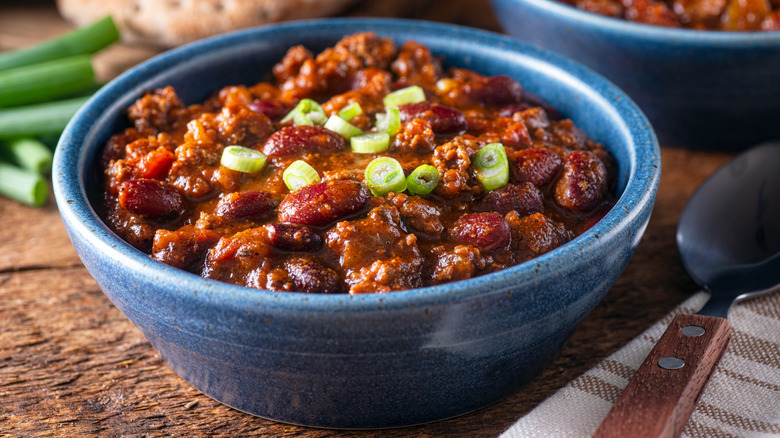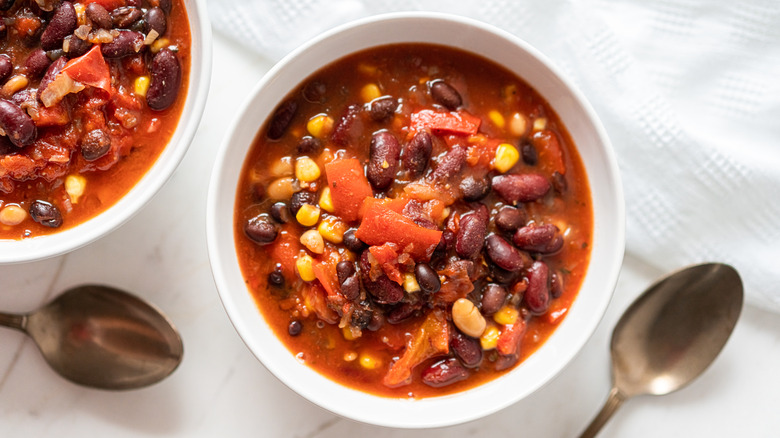What Types Of Beans Are Best For Chili?
Chili is one of those classic dishes that seem to have been around forever, the type that has proliferated around the world and, as a result, has a hazy origin story. According to National Geographic, the spicy, hearty stew that either does or does not contain beans — more on that in a minute — has been reported to have come to life in, varyingly, post-conquest Mexico, 17th-century Spain, and Frontier America. But most chili scholars agree that the warming dish most likely originated in 19th-century Texas, the state that has claimed chili con carne as its state dish since 1977 (via What's Cooking America).
Anyone who has sunk a spoon into a cup or bowl of chili on more than one occasion is probably familiar with the great "meat or no meat" debate. According to Epicurious, Texas chili definitively does not contain beans, but rather stew beef in a glossy sauce made from dried chilis. Over the years, however, recipes for chili have expanded to include all kinds of ingredients, and common bean versions today typically include tomatoes and a hefty dose of dried spices. If you're looking to stir up a bean chili — either with or without beef — then you'll want to look for the following types of beans at the store.
Kidney, black, and pinto beans are good choices for chili
Chili has come a long way from its probable beef-based, 19th-century Texas origins, with popular modern versions including ingredients ranging from white beans and ground pork to smoked chicken and navy beans to zucchini, yellow squash, and corn (via Southern Living). In spite of Texans' strong solidarity against the inclusion of beans in chili (via Texas Living), many of us like to include either canned or dried beans in our favorite chili recipes — but we might not be exactly sure which types of beans to pick up at the store.
According to Southern Living, kidney beans are probably the best chili option because they are large and can hold their own, texture-wise, alongside other chili ingredients such as diced tomatoes or other vegetables. Black and pinto beans, which are also substantial, are also good choices, according to the outlet. Southern Living advises against choosing small white beans, as they tend to break down in chili and get lost among other ingredients. As to whether to choose canned or dried beans, that's your choice, but many outlets — Taste of Home among them — argue that the latter option works best, as dried beans retain their shape better and tend not to go mushy once cooked.

